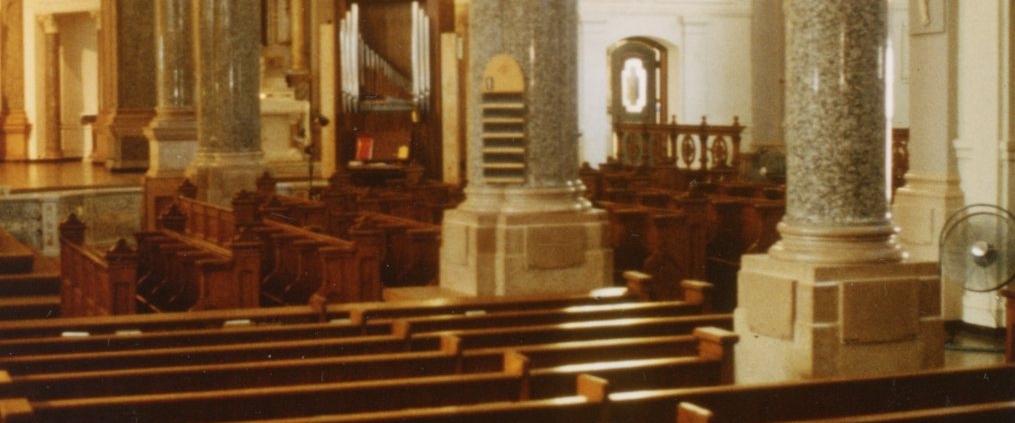Ancestors in the Pews
Tony found himself alone in St. John the Baptist Church in rural Minnesota, the church of his younger years. He was waiting for other people to arrive. “Where is everyone? It’s nearly time for Mass to begin.” Later, he discovered that the Sunday 10 a.m. Mass had been scheduled for the parish’s partner in the neighboring town because it would be easier for people to participate in the special multi-parish bingo tournament that would follow the Mass.
Even though Tony was the sole worshipper that morning, he stayed in the church, grateful for some time for reflection and prayer. In the quiet, Tony became aware of the condition of the pews around him and the one in which he was sitting. He surmised that they must have been used for many years. Although they were clean, they were worn where parishioners had sat repeatedly leaving indentations and other marks, including scratches etched from the rivets on the men’s jeans. Here the faithful had sat, celebrated Mass and done what Tony called the “Catholic movements (spiritual aerobic exercises) of standing, sitting, and kneeling.” The worn areas on the pews were most likely made by the members of the same family. Tony remembered hearing that families paid an annual pew rent thus putting a claim on their own place in the church.
Gradually, Tony began to realize that the pews held memories of people of several generations who worshipped in this sacred space—Grandma and Grandpa in the front pew, Aunt Anna and Uncle Harold who were married in the early 1940s, the neighbor kids who kept their parents busy giving stern looks that commanded, “Be quiet, sit straight, and stop poking each other.” Memories brought back Father K. who gave strict interpretations of whatever rule he wanted to preach about and Aunt Rose who was determined to lead all to the completion of the rosary they prayed before Mass began. The musty smell of incense, faces of grade schoolboys who served as acolytes for Mass, and the singing of the choir stole their way into Tony’s current environment.
Tony recalled parishioners who knew and were part of the history of the parish and who called it their spiritual home. He remembered people who contributed financially to maintain and improve the church’s physical condition. Looking around the church, the stained-glass windows with their images of people from biblical stories along with other saints reminded Tony of the faithful who had donated money for them. These foremothers and fathers of the current congregation lingered in his memory and brought the past into the present.
Tony lingered for an hour, adding his own presence, prayers and hopes to those of his ancestors and the current church community. He realized he was sitting in the presence of his parish ancestors. In quiet he was adding his own mark on the pew near his great grandparents’ stained-glass window which read in German: “ZUM FROMMEN ANDENKEN AN…” (to the pious memory of…”). Alone in the church Tony’s spirit joyfully shouted, “Bingo!” He realized he had won a grand prize—a community of ancestors who helped form who he is today.
By Mary Reuter, OSB
Photo: Interior of Sacred Heart Chapel pre-renovation, taken between 1957 and 1981. Provided by the Saint Benedict’s Monastery Archives.



